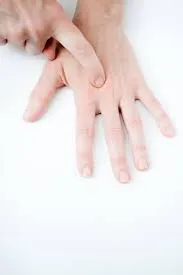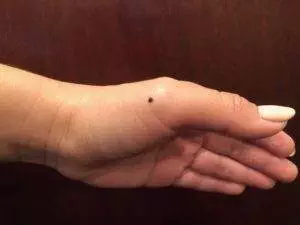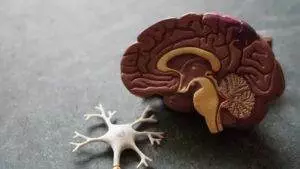-
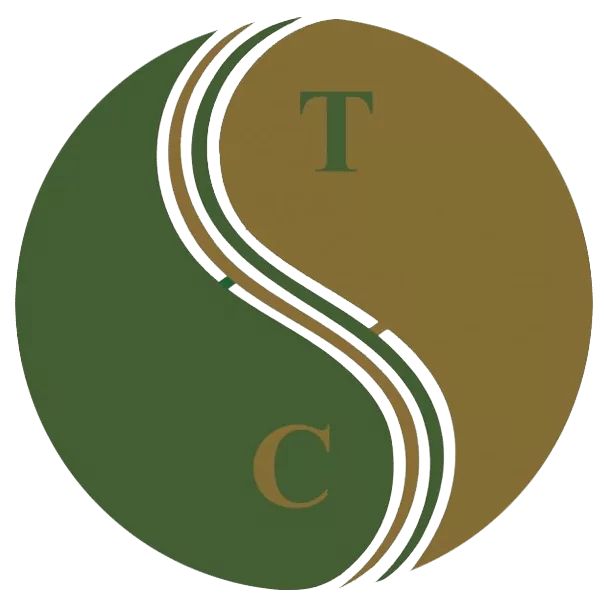 Art of Wellness Acupuncture & Traditional Chinese Medicine (TCM)11704 Wilshire Blvd, Suite 295, Los Angeles, CA, 90025
Art of Wellness Acupuncture & Traditional Chinese Medicine (TCM)11704 Wilshire Blvd, Suite 295, Los Angeles, CA, 90025
myartofwellness@gmail.com310-451-5522 Office Hours
MonClosedTue7:30 am --4 pmWed7:30 am --4 pmThu7:30 am -- 4 pmFri7:30 am -- 4 pmSat7:30 am -- 4 pmSunClosedOur office opens from Tuesdays to Saturdays 7:30 am to 4 pm, will be closed on Memorial day, Independent day, Labor day, Thanksgiving day, Christmas and New year.
-
Recent Posts
- Chinese New Year 2026: Year of the Horse
- Acupuncture and TCM Treatment for Perimenopause Symptoms
- How to Treat Insulin Resistance With Acupuncture and TCM
- How to Treat Metabolic Syndrome With Acupuncture and TCM
- How to Treat Syncope With Acupuncture and TCM
- How to Treat Thoracic Outlet Syndrome With Acupuncture and TCM
- How to Treat Dupuytren’s Contracture With Acupuncture and TCM
- How to Treat Nutcracker Syndrome With Acupuncture and TCM
- How to Treat Rosacea With Acupuncture and TCM
- How to Treat Perioral Dermatitis With Acupuncture and TCM
- Lymphatic Drainage With Acupuncture and TCM
- How to Treat Turf Toe With Acupuncture
- How to Treat Nerve Pain With Acupuncture and TCM
- How to Treat Watery Eyes With Acupuncture and TCM
- How to Treat Ovarian Cysts With Acupuncture and TCM
- How to Treat Dystonia With Acupuncture and TCM
- Sign up to receive news and updates and get my free report:“The Top 10 Reasons to Try Acupuncture”

November 2025 M T W T F S S 1 2 3 4 5 6 7 8 9 10 11 12 13 14 15 16 17 18 19 20 21 22 23 24 25 26 27 28 29 30
Pain
Acupuncture and TCM for Cancer – Integrative Oncology
By Dr. Qineng Tan, L.Ac., Ph.D. and Xiaomei Cai, L.Ac., Ph.D.
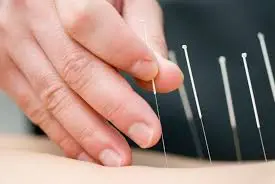
Until very recently, it seemed cancer was the one illness that had touched everyone’s life in some way. Cancer is the leading cause of death in the world. Almost 40% of the population will be diagnosed with some form of cancer at least once in their lives. We have all lost friends and relatives to this seemingly relentless form of disease. Doctors, scientists, researchers, and organizations have worked tirelessly in recent decades to develop life-saving treatments, and millions of people go on to live full lives as cancer survivors.
Cancer is a broad term that refers to the unchecked growth of abnormal cells in the body. When the body’s mechanisms for getting rid of old cells begins to break down, these damaged cells begin to divide, in some cases forming masses, or tumors. These types of cancer are usually classified by the organs affected by the tumor, including gynecological cancers such as breast cancer, ovarian cancer, cervical cancer, and endometrial cancer, as well as prostate cancer in men, lung cancer, cancers of the gastrointestinal tract (pancreatic, stomach, esophageal, colon, rectal), thyroid, brain, spine, bladder, liver, and kidneys. Carcinomas refer to cancers affecting the skin, and sarcomas to cancers affecting the musculoskeletal system. Hematological cancers involve the proliferation of abnormal blood cells, including leukemia, lymphomas and multiple myeloma.
Written records of Traditional Chinese Medicine detection and treatment of cancerous growths go back over 2000 years. In recent decades, TCM has become more recognized as a way to complement and enhance contemporary methods of treating cancer. Integrative Oncology, in which the latest technological and pharmacological advances are combined with Traditional Chinese Medicine techniques and philosophy, forms a holistic way of working with cancer patients.
Cancer Treatment Options
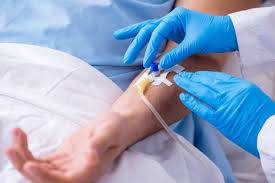
Cancer screening is a vital component of modern health care, as early detection offers the best chances for successful treatment. Data show that of the 18 million new cases detected in 2018, 5 million could have been discovered sooner and treated more effectively if we had higher rates of screening. Unfortunately, almost half of colorectal and cervical cancers and a third of breast cancers are not diagnosed until the disease is already in later stages, which makes them harder to treat.
When a cancerous growth is still localized, surgery and/or radiation treatment can remove or destroy much or all of the abnormal growth. When cancer has advanced to a later stage, and cells have spread through the body, then more systemic treatments are used, such as:
- chemotherapy, which uses cytotoxic drugs to kill tumor cells
- immunotherapy, a newer type of treatment, uses specifically designed synthetic antibodies to boost the body’s immune system.
- targeted therapy seeks to destroy the cancer cells without harming healthy tissues surrounding tumors.
New treatment options are constantly being researched and tested, giving patients a better chance at stopping the cancer in its tracks.
However, most cancer treatments themselves can cause serious side effects that dramatically impact quality of life. Positive outcomes also vitally depend on a person’s ability to strengthen the body’s immune system while fighting the disease, as well as coping with the severe emotional stresses involved. Research has shown that acupuncture can significantly mitigate side effects of chemotherapy, radiation treatments and other conventional methods of treating cancer.
Chemotherapy and radiation work by killing cancer cells. As these chemicals do not distinguish between normal and malignant cells, they can also damage surrounding tissues, creating more blockages. The synthetic drugs used also increase toxicity levels within the body. Acupuncture can help increase the production of white blood (immune) cells, detoxify the body and increase energy, so that the cancer can be eradicated, and new, healthy cells can flourish. Acupuncture can also improve sleep and relieve anxiety, so that hope and confidence can outweigh fears and exhaustion.
Acupuncture and TCM can be valuable for cancer patients throughout every stage of treatment, recovery and beyond, not only alleviating the pain and nausea associated with cancer treatments, but also boosting immune function, relieving anxiety and depression, and even helping to prevent the cancer from coming back.
How Can Acupuncture Help with Cancer Treatment?
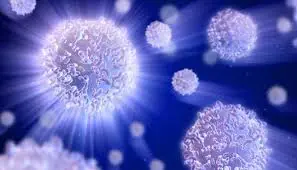
Acupuncture operates based on the philosophy that the body is powered by Qi – a life force energy – that runs along pathways throughout the body called meridians. Pain and diseases are caused by blockages in these pathways that prevent Qi and nutrient-rich blood from reaching and adequately supplying the organ systems of the body. When the body is balanced and functioning smoothly, the immune system is able to detect and eradicate pathogens on its own. Our bodies do this all the time. While genetic predisposition may increase some people’s cancer risk, the truth is everyone is susceptible to the formation of cancerous cells. When the body is healthy, it can sweep away mutated cells. But when the body is in a weakened state and energies are blocked, cancer cells are able to take hold, multiply, and grow.
Acupuncture can help relieve symptoms caused by the disease itself, as well as the side effects of treatment, including but not limited below:
- neuropathy
- pain
- nausea/vomiting
- dry mouth
- fatigue
- insomnia
- depression & anxiety
In addition to providing palliative care for these symptoms, acupuncture treatment works on a deeper level to strengthen Qi, revitalize blood, and restore healthy functioning to the organ systems. The combination of acupuncture treatment to stimulate specific points and herbs to act on chemical/elemental imbalances can approach the root cause of the abnormal cell growth.
Acupuncture for Cancer Treatment Side Effects

The most common side effects of cancer treatments such as chemotherapy, radiation, and immunotherapy are gastrointestinal in nature. Nausea, vomiting, abdominal pain, and diarrhea are caused by the medications involved, which may be administered intravenously or by mouth. The extent to which a patient feels nauseated depends on many factors: the location of the cancer being treated in the body, the dosage of the medications, the timing of administration, and a person’s prior susceptibility to nausea and vomiting. Treatment for tumors in the brain, liver, or gastrointestinal tract–such as esophageal, pancreatic, colon, or stomach cancers–is more likely to cause vomiting. Women, in general, are more likely to experience severe nausea. Antiemetic drugs or stomach acid-reducing medication like Esmeprazole can sometimes help with the nausea, but they don’t work in many cases. One controlled study showed that acupuncture given to patients undergoing chemotherapy reduced the duration and frequency of unpleasant gastric upsets. The TCM providers in this case used acupuncture points to reduce spasming of the stomach and intestines, while strengthening liver and spleen function to improve digestion and absorption. The patients given acupuncture ended up spending less time in the hospital.
Using acupressure point PC6, located below the wrist on the inner forearm in between the two tendons, is very effective for controlling nausea. Relief of retching and vomiting helps patients withstand chemotherapy sessions better and helps keep appetite and proper nutrition up.
Another side effect of chemotherapy is neutropenia, or low white blood cell count. This is especially prevalent amongst patients being treated for bone marrow cancers, such as leukemia, lymphoma, and multiple myeloma. The low level of bacteria-fighting immune cells puts people at higher risk for developing infections during the course of their treatment, especially invasive candida infection. A study involving women with ovarian cancer suggested that acupuncture treatment helped patients maintain higher levels of white blood cells and neutrophils. The study also suggested that acupuncture measurably reduced cortisol levels, positively impacting patients’ stress.
Protecting cancer patients from side effects of chemotherapy such as neutropenia and severe nausea allows them to adhere more closely to their treatment programs, which can improve outcomes.
Acupuncture for Late Stage Cancer Pain and Neuropathy
Pain is, unfortunately, the most pervasive symptom experienced by people with cancer, yet this pain is often inadequately treated with analgesics. Recent epidemic-level problems with opiate use mean that doctors and patients are hesitant to use these powerful medications, which can lead to addiction. Acupuncture offers an alternative method for reducing pain naturally, without any additional risks involved.
Cancer pain can be pathophysiologically caused by tumorous growths themselves causing compression around other tissues and nerves. It can also be caused by secondary tissue damage created by chemotherapy, radiation, hormone therapy, or surgeries. When nerves are damaged, neuropathy pain can result.
To manage all of the different types of pain, patients are often prescribed some combination of acetaminophen, opiates, anti-inflammatories, anticonvulsants, corticosteroids, and antidepressants. All of these can cause serious side effects, and some patients will build up a tolerance to the medications, reducing their efficacy. Some people develop a dependence or addiction.
Pain, as a subjective experience, affects emotional and mental health as much as it does the physical body. Pain can be amplified by the very real fear that it will only get worse or never end. Adequate pain management is vital to keeping a positive frame of mind and hopeful attitude. When pain is reduced, attention and energy can be freed up for increased healing and motivation to maintain healthy behaviors that will improve the chances for recovery and prevent recurrence.
Most people who seek out acupuncture do so for chronic pain conditions. While much of how TCM works is still unproven by scientific study, many research studies have shown that acupuncture is an effective modality for pain relief, such that it is now widely accepted as an adjunct by the medical community. Acupuncture treatment can be used on its own to help alleviate pain, or in addition to pain medications, in which case it will help both to address the pain and to mitigate the side effects of the drugs.
Top 3 Tips for Cancer Prevention

TCM is preventative medicine. It is always best to manage lifestyle for maximum health in order to prevent disease from forming in the first place. While some people are more at risk for developing certain kinds of cancer than others, everyone can benefit from healthy habits that reduce these risks. Regular acupuncture treatments help balance Qi and maintain good flow between the organ systems of the body. But it is up to each individual to eat in such a way that the cells receive abundant nutrient-rich blood, to avoid toxins whenever possible, and to move the body frequently and with intention.
- Green tea contains chemicals called polyphenols, especially EGCG. These antioxidants inhibit the kind of cell damage that leads to cancer growth. Green tea has less caffeine than coffee or black tea, and can be drunk throughout the day.
- Exercise – Many studies have shown that increased physical activity reduces the risks of specific types of cancer, such as: pancreatic, endometrial, breast, colon cancer, esophageal, kidney, and stomach cancer. Exercise prevents cancerous growth by helping to regulate hormone levels, preventing high blood sugar, insulin resistance, and obesity, and reducing inflammation throughout the body.
- Healthy diet – A well-rounded food program lowers the risk of cancer. Focus on whole foods such as fruits, vegetables and whole grains. Salmon is full of omega-3 fatty acids that have been shown to help fight cancer. Other fish that can help reduce the risk of endometrial cancer in women include halibut, sardines and tuna. Cruciferous vegetables are especially full of nutrients and fiber. Included in this family of vegetables are broccoli, cauliflower, radishes, brussel sprouts, kale, cabbage, and bok choy. Cruciferous vegetables are high potent anti-cancer phytochemicals. Studies have shown that this vegetable group has the ability to stop the growth of cancer cells for tumors in the breast, uterine lining, lung, colon, liver, and cervix. And studies that track the diets of people over time have found that diets high in cruciferous vegetables are linked to lower rates of prostate cancer. Eat fruits and vegetables raw or only lightly steamed so they retain their cancer fighting phytochemicals. Go for at least one of these greens on a daily basis: arugula, beet greens, bok choy, broccoli, brussel sprouts, cabbage, Napa cabbage, collard greens, daikon, rutabaga, chard, watercress, pea shoots, spinach.
Acupuncture Near Me for Cancer Support
Acupuncture provides palliative care for the many intense discomforts of cancer and cancer treatment. But TCM goes beyond pain relief. Regular acupuncture treatments combined with lifestyle changes can improve patients’ ability to defeat cancer now, and to prevent cancers in the future.
When you or a loved one is fighting cancer, building a team of doctors who will work together to provide integrative health care can increase the chances of survival and recovery.
*This article is for education from the perspective of Traditional Chinese Medicine only. The education provided by this article is not approved by FDA to diagnose, prevent, treat and cure human diseases. It should not stop you from consulting with your physician for your medical conditions. Traditional Chinese Medicine is based on Qi, which is an invisible force that usually cannot be observed by modern science. Because science focuses on testing ideas about the natural world with evidence obtained through observation, these aspects of acupuncture can’t be studied by science. Therefore acupuncture and Chinese herbs are often not supported by double-blind, randomized trials, and they are considered alternative medicine therapies in the United States.
How to Get Rid of Neck Pain With Acupuncture and TCM
By Qineng Tan, L.Ac., Ph.D.

Neck pain, or pain that occurs or originates in the cervical spine, is a common complaint among people of all ages. Neck strain due to everyday repetitive motions, posture while working on the computer, or an odd sleeping position is something everyone can relate to. Acute neck pain or whiplash can be caused by an injury, like a sudden fall or car crash. Chronic neck pain arises because of any one of a number of degenerative disorders affecting the upper seven discs of the spinal column. Acupuncture and other TCM treatments for neck pain and other musculoskeletal disorders have been shown to be highly effective for relief of pain and stiff neck.
A sore neck can come on quite suddenly, or it can slowly develop over months or even years. The nature and exact location of neck pain can vary widely: neck strain, spasms, neck pain and headache, neck pain right side, along one side or both sides of shoulder blade, neck pain that refers to arm/hand pain/tingling/numbness, or pain in back of head and neck. Signs and symptoms associated with neck pain may include: stiffness, immobility, general soreness, sharp, stabbing pains, and pain that radiates into the shoulder and down the arm.
Neck pain can be debilitating and get in the way of daily activities. When people seek medical care for neck pain, doctors often find it difficult to pinpoint the exact source of the stiffness and discomfort. Generally, patients are prescribed pain medications and muscle relaxers to alleviate soreness and restore some mobility until the situation resolves itself. This does not address the root cause, however, and the pain may return or worsen. In some cases, patients might be referred to PT (physical therapy) and/or a chiropractor to help strengthen the muscles, or adjust structure, and relearn habituated movement patterns.
Acupuncture provides relief of neck pain and tightness without habit-forming drugs that can cause unwanted side effects. We see many people who have tried PT and even surgery to treat neck pain but are still suffering, looking for an alternative method to address their symptoms.
In this article, we will discuss neck anatomy, how TCM views neck problems, how to treat neck pain with acupuncture, and offer some neck strengthening exercises you can do at home to help alleviate pain without side effects.
TCM View of Neck Pain and Diseases of the Cervical Spine
The neck has a big load to carry, and yet it is, in fact, the most delicate and potentially the weakest portion of the body because it connects the head to the trunk with only seven relatively small vertebrae.
The average adult’s head weighs between ten and fifteen pounds. The head, housing the brain, is arguably the most important part of the body. Many nerves and blood vessels that support fundamental functions within the head run to the rest of the body through the narrow pathway of the neck. The neck anatomy must structurally support the skull and safely house all of these crucial tissues.
The seven vertebrae that comprise the cervical spine support the major arteries that nourish the brain and all of the other important organs of the head. Bundles of nerves that send communications from the brain to the rest of the body also run along the spinal column. If the blood vessels or nerves that run through the cervical spine get twisted or blocked, it can cause compression that affects the ears, eyes, and mouth. Sometimes people may not realize that problems such as blurry vision, a burning sensation in the mouth, high or low blood pressure, tingling in the arms, tinnitus, dizziness, and headaches can all be due to deeper neck problems related to the blockage of nerve impulses or blood flow to the head.
Neck pain and headache are often signs of something deeper going on. Pain in the side of the neck and sore neck muscles are a signal to pay attention to the health of the spine.
- Nerve compression – causing sensations of pain, tingling,or numbness in the neck, shoulder or arm, decreased mobility, stiffness, muscles atrophied or spasming, can cause radiating neck and shoulder pain.
- Artery blockage – constricting blood flow, affects the sensory organs of the head, causing dizziness, lack of balance, pressure in the head, eyes fatigue, hearing loss, tinnitus, or problems with memory and cognitive function.
- Spinal cord damage – a serious injury, such as from a car accident or fall from a horse can permanently damage the spinal cord, sometimes causing partial or total paralysis.
- Bones/Joints – the vertebra is a long series of fine joints; these can degrade over time, the bones becoming misshapen, discs becoming enlarged or calcified or bulging.
- Soft tissue – the muscles supporting the cervical spine weaken, sometimes due to injury or posture. The ligaments thicken and stiffen. Over time, the alignment of the spine is compromised.
Pain in the muscles of the neck can be due to old injuries, the aftermath of working out or playing sports. Repetitive motions at work – lifting objects, bending the head forward, looking down or to one side constantly – can cause stiff neck pain, tightness, and tenderness. As we age, the muscles simply become fatigued more easily. Rest can help these mechanical problems, but lack of use can also cause more stiffness.
Facet joint syndrome occurs when the small joints of the spinal column become stiff and swollen due to inflammation. We see this condition even among young adults and teenagers. Facet joint syndrome causes a significant lack of mobility, making it hard to turn the head, get up and down from a seat, or stand without hunching forward.
Bulging discs are a chronic condition, while herniated discs are usually caused by a sudden injury to the spine.
Anterior oblique muscle syndrome typically presents with shallow breathing, emotional, a hard time turning the head, pain gets worse if the arm goes up, accompanied by numbness or tingling in the arm.
Neck pain, then, can be a symptom of any number of problems related to the neck and spine, or even the jaw, as in TMJ disorders. This is why it can be so difficult for medical doctors, even with the use of advanced diagnostic testing and equipment, to determine the exact cause of the pain.
How Acupuncture Treats Neck Pain

TCM views all health problems holistically. A qualified acupuncturist can not only treat the symptoms of neck pain and stiffness, often providing relief of sore neck and muscle spasm in neck, but will carefully consider the whole picture of symptoms and lifestyle habits that are contributing factors. A TCM practitioner will look for the root cause of neck pain and address that, so that the pain does not return again and again. An acute condition that involves neck strain and soft tissue injury will be treated differently than a chronic condition related to the vertebrae and discs.
Patients who are new to acupuncture may be surprised when their practitioner begins inserting needles, and none of them are going into the area that hurts–in this case, the neck. But acupuncture often does not work in such a direct way. To treat neck pain, a qualified acupuncturist might be working on points in the abdomen that reduce inflammation throughout the body while strengthening Qi and Yang energy.
Acupuncture treatment is sometimes enhanced by the additional use of electrical stimulation. Wide-ranging studies have shown that many people feel an immediate improvement after the very first session, with even more significant positive effects on pain and mobility accumulating after several treatments.Other TCM modalities can also be incorporated into the treatment regimen, especially forms of therapeutic massage such as Tuina, Gua Sha, Moxibustion (burning of warming herbs near acupuncture points), and Cupping (use of glass cups to create suction) may also be used to help move stagnant Qi and blood.
Acupuncture is safe, natural and has no such side effects—unlike many of the medications often used to treat pain.
TCM Herbs for Chronic Neck Pain
Chronic neck pain conditions involving radicular (radiating pain) symptoms can be alleviated by the use of specific Chinese herbal formulae. Chinese herbs, both in oral and topical formulations, have been shown in some study to be better at relieving neck pain stemming from degenerative disc disorders or cervical radiculopathy (pinched nerves or nerve damage) than NSAID type medications. Topical pain relievers such as liniment (woodlock, or Huo Luo oil) or analgesic patches can be very effective for pain relief, with no or less side effects.
Top 5 Tips for Neck Pain Relief
Besides acupuncture treatment, you can also get some stiff neck relief by improving your posture, sleeping position and by practicing neck pain exercises. Here are some of the best neck pain remedies you can achieve through self care at home.
- Acupressure Points for Neck Pain – Luo Zhen is located in the hollow on the back of the hand between the second and third knuckles. Effective for sore neck and whiplash. Gently move the head and neck to determine which side is more stiff and painful. Choose that hand, then apply gentle pressure, making small circles, pressing deeper into the tenderness, for a few minutes. Check again for improved mobility. Repeat on the other hand if necessary. GB21 – Gall Bladder meridian point, for neck pain, shoulder tension, headaches, located on the shoulder. Find by moving your finger lightly from your shoulder towards your neck until it stops and then pressing down where it is most tender.

Luo Zhen point for neck pain relief - Improve Your Posture – The muscles of the neck must work in tandem to hold the head steady as it bends and turns in all directions. When the head is bent forward at a 45 degree angle, as it so often is these days as you look down at your devices for hours at a time, the strain of carrying the weight is increased dramatically. You may not be able to get away from this problem entirely, but becoming aware of the way you sit, stand, and tilt your head downward can help improve the situation. Set up your desk with the best ergonomics you can manage, ensuring that your screen is level with your eyes. Try holding your phone higher when scrolling. Take breaks often; look up, and gently stretch the neck to release tension.
- Exercise to Stretch and Strengthen the Neck Muscles – Flex your neck to point of gentle tension in each direction: first bending the head all the way down and forward, then all the way back (not so far as to cause discomfort), then tilting to the right side and the left side. Hold in each position for five breaths. This will help stretch the neck muscles and improve your range of motion. After you’ve been sitting at your desk for a while, take and break, stand up, clasp your hands behind your back and look over each shoulder toward your heel.
- Best Way to Sleep with Neck Pain – The correct positioning of the head and neck during your night’s sleep is key to preventing neck pain. It’s best to sleep either on your back or side. Sleeping on your belly forces your head to turn one way or another. Most important is making sure that the neck is supported by your pillow. People often prop the head up too high on multiple pillows. If you sleep on your back, you might want to use a roll-shaped cushion under your neck and then a flatter pillow under your head. Pillows that conform to the shape of the neck and head can work well for side sleepers; you might choose a feather or buckwheat-filled pillow, or one made of memory foam. Aside from positioning, the ability to get a good night’s rest is vital for healing and preventing all types of musculoskeletal pain and inflammation. If you are having trouble sleeping, your acupuncturist may help with that at the same time as treating neck pain.
- Stay Hydrated – The cartilaginous discs in the spine are made up of 80% water. As we age, we tend to lose precious water from the discs, which can contribute to Cervical disc degeneration. Drink plenty of body-temperature water throughout the day.
Pain Clinic Near Me for Neck Pain
Even though some neck pain conditions may resolve themselves, it is best to seek treatment for acute neck pain after an injury right away before it becomes something more serious. If neck pain is recurrent or chronic, don’t suffer any longer. Find the best acupuncture near me to get neck pain relief and resolve the long-standing issues that are causing your sore neck once and for all.
*This article is for education from the perspective of Traditional Chinese Medicine only. The education provided by this article is not approved by FDA to diagnose, prevent, treat and cure human diseases. It should not stop you from consulting with your physician for your medical conditions. Traditional Chinese Medicine is based on Qi, which is an invisible force that usually cannot be observed by modern science. Because science focuses on testing ideas about the natural world with evidence obtained through observation, these aspects of acupuncture can’t be studied by science. Therefore acupuncture and Chinese herbs are often not supported by double-blind, randomized trials, and they are considered alternative medicine therapies in the United States.
How To Treat Sprained Ankles by Acupuncture and TCM
by Qineng Tan, L.Ac., Ph.D.

Prompt treatment of sprained ankles by Acupuncture and TCM can reduce pain, swelling, and recovery time. Acupuncture improves circulation to alleviate inflammation and generates the flow of endorphins to relieve pain.
A sprained ankle is one of the most common injuries. It can happen to kids and adults of all ages. It can happen when you’re actively playing a sport, or just walking around in your own home. A sprain is a soft tissue injury that results from the overstretching or tearing of ligaments due to the ankle being pushed beyond its normal range of motion by a sudden twist or turn. Ligaments are the strong tissues that stabilize all of the small bones of the foot and support the joint where the leg bones meet the foot. This injury most often affects the outer side of the ankle.
Acupuncture Near Me for Sprained Ankle
Acupuncture treatment can provide immediate analgesic pain relief for soft tissue injuries such as an ankle sprain. The stimulation of appropriate acupoints has been proven to release natural endorphins in the body that reduce pain while also blocking the nervous system processes that signal pain. Soft tissue injuries are those that affect the ligaments, tendons and muscles. Symptoms of soft tissue injuries such as sprains and contusions include pain, swelling, bruising and limited ability to use the affected area. Acupuncture has been used for thousands of years to treat these types of injuries. Inadequate care for a sprained ankle or other similar injury can lead to a long-term loss of mobility and strength in that part of the body. That’s why we recommend you seek acupuncture treatment as soon as possible after the occurrence of the sprain and continue until the area is truly healed.
3 Types of Ankle Sprain
A sprain can be one of three severity levels:
- Grade I
A minor sprain can occur when you are just walking. The ankle turns in sharply, causing the muscles and ligaments to pull and tear slightly. - Grade II
A moderate sprain might happen when running, or because of a fall. In this case, the ankle is twisted further in, causing a partial tear of the ligament. - Grade III
A severe sprain happens because of significant impact—such as a fall at great speed or from a height, or a fall compounded by another person’s weight, such as might happen while playing a sport like football, soccer or baseball. In this case, the ligament might be torn completely. In very severe cases, it may also cause some fracturing of the ankle and/or even dislocation.
The ankle is a wonder of design; it is a very stable joint that not only carries your body weight, but withstands a lot of pressure and impact when you run and jump.
It is really made up of two joints; the true ankle joint is formed by the meeting of three bones–the tibia, fibula and talus—and works like a hinge to create the up and down movement of the ankle. The subtalar joint is formed by the talus and the calcaneus, and allows for the side-to-side motion of the ankle. Ligaments are the soft tissues that connect bones to bones, while tendons are the soft tissues that connect muscles to bones; both are made up of small fibers of collagen. Cartilage is the tough yet soft, slippery tissue that creates cushioning and slip between the bones. A sprained ankle can result in torn tissues in the muscles, tendons or ligaments, damage the cartilage, and in severe cases, may involve fractures in the bones.
The pathology of a sprain begins in the acute stage—the first 1-2 days–with internal bleeding at the injury site. Fluid builds up in the tissues of the joint, which leads to swelling. After a few days, the active bleeding stops and inflammation begins to exert pressure around the area, compressing the blood vessels and slowing down the flow of fresh blood. This results in blood stagnation.
When blood has built up in the joint and stopped moving freely, it has a negative effect on the healing process. Incomplete healing can mean that the ankle loses some of both its stability and flexibility. The tendons and ligaments can become fragile, which means the joint is now more susceptible to re-injury.
Self Care for Sprained Ankles
For immediate home care of a sprain, follow the Universal Rule of RICE.
- R – Rest
- I – Ice

Acupressure Point for Sprained Ankle - C – Compression
- E – Elevate
Ice a new injury for the first three days. Then, begin alternating between ice and heat. For chronic pain conditions, use a heating pad more than cold therapy.
You can stimulate Xiao Jie acupressure point with gentle pressure. Press this point on the base of the thumb joint: right thumb for left ankle, left thumb for right ankle.
Do not massage the area during the first week of recovery. After that, gentle self-massage between the knee and ankle, focusing on releasing tightness in the shin and calf, is best. Don’t walk or put any weight on the foot for 3-7 days, depending on the severity of the injury. When you are ready to begin exercising the ankle, begin with gentle, non-weight-bearing movements.
A good exercise to try is the “A to Z Exercise”:
Lift the injured leg, or cross it over the other leg so the ankle and foot can move freely. Using the big toe as the point of your “pencil,” draw the letters of the alphabet in the air, using at first very small, circular movements of the ankle joint. Gradually, work up to making the letters larger.
After 2-3 weeks, you may be ready to begin engaging in activities that increase the range of motion, yet still keep most of your weight off the ankle, doing exercises such as pedaling a bike, swimming, or walking through water.
Gradually, after 4-5 weeks, you will be able to resume walking on a flat surface.
7 Ways to Prevent Sprained Ankles
A person who has sprained an ankle is more susceptible to future injuries in that area. To prevent such injuries:

- Regularly practice exercises to strengthen and improve the flexibility of the ankle.
- Practice all-over muscle strengthening exercises and focus on balance training.
- Wear properly supportive shoes, both when playing sports and in normal everyday life. (Minimize wearing high heels, flip-flops, etc.)
- Always warm up before engaging in sports and workouts.
- Be extra careful walking on uneven surfaces.
- Wear a stretchy brace if you start feeling soreness.
- Receive acupuncture “tune-ups” regularly to maintain good flow of qi and blood.
It is good to see your acupuncturist as soon as possible after spraining an ankle. We use various modalities including acupuncture, herbal supplements to facilitate healing, and possibly moxibustion to bring more energy to the area. The treatment will focus on stopping the internal bleeding and reducing the swelling of the joint. Minimizing inflammation and maximizing the constant circulation of blood will speed healing and help to ensure that the injury does not become a chronic one.
How to Treat Lower Back Pain with TCM and Acupuncture
by Qineng Tan, L.Ac., Ph.D.
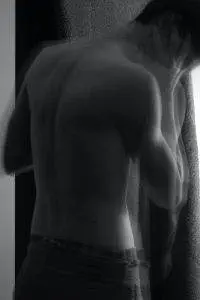
That sudden, scary sensation of pulling in your lower back that lets you know you’re in for more pain later. The nagging, daily ache that develops over time. Lower back pain can really feel like a burden, holding you back from enjoying your life. If you are searching for how to reduce low back pain, Acupuncture and TCM can provide real relief.
Pain in the lower back is one of the most common complaints heard by healthcare practitioners. The vast majority (80%) of adults experience at least one episode of low back pain at some point in their lives. For some people, lower back pain becomes a chronic condition. It is the second most common cause of disability among adults in the United States.
This article will address the types and common causes of lower back pain, how to treat low back pain with acupuncture and TCM, and eight excellent suggestions for ways you can reduce low back pain and prevent flare-ups with lifestyle change and self care.
How to Treat Lower Back Pain – A Common but Complicated Condition
Lower back pain presents a challenge for physicians, because in many cases, there is no clearly discernible cause. Imaging scans may help us get a picture of structural damage to the spine, but they do not tell us the whole story. Pain is not just about structural or mechanical problems in the body. The problem may be mechanical, but it may also be chemical, emotional, behavioral, sociological, or a combination of any of these.
The American College of Physicians has just recently issued new guidelines regarding the treatment of lower back pain specifically advocating that doctors and patients first choose natural and alternative therapies, such as acupuncture and massage, over pain medications.

Acupuncture does not only address the immediate source of pain. TCM treats the whole person. An acupuncturist will study the different factors of each patient’s unique presentation of symptoms in making a diagnosis and designing a course of treatment. This will include not only acupuncture, but herbal formulae to support the healing of the body, and specific exercise and nutrition advice to strengthen the whole body from the inside. Lower back pain can take its toll on a person’s psychological outlook. Stress and depression can turn an acute problem into a chronic one. Treating the underlying causes of an acute condition can prevent it from becoming recurrent or chronic.
Types of Lower Back Pain
Most patients experience a generalized, nonspecific kind of lower back pain. These may be related to muscle strain or stiffness, repetitive movements or unfavorable sitting or sleeping positioning. Other conditions are based on specific injuries or pathologies. Some types of pain, such as sciatica, are rooted in the nerves, possibly due to pinching or other damage, and causing hip pain and pain that radiates down the leg. Sometimes the sensation is more like tingling or numbness than fiery pain.
In over 30 years of practice in treating all different types of lower back pain, we have often seen patients who had only minor structural problems but were experiencing severe pain. Many patients who have had surgery to correct a problem; their scans may show that the problem has been “fixed”–but they are still in a lot of pain. In other words, a person’s experience of pain or loss of mobility may not correspond to what we see in an image.
Common conditions leading to back pain include (but are not limited to):
- Degenerated disc
- Bulging or herniated disc
- Spinal stenosis
- Spondylolisthesis (slipped disc)
- Spinal scoliosis
- Arthritis
- Muscle strain
- Muscle spasm
- Pinched nerves
- Nerve damage
- Kidney stones or gallstones
- Digestive issues (constipation
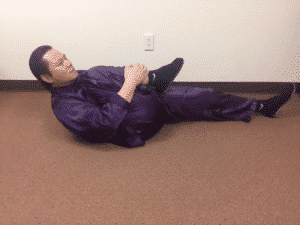
Eight Tips for Self Care to Reduce and Prevent Lower Back Pain
With TCM, we aim for long-term, lasting results. At the same time, we guide the patient in vital lifestyle improvements, such as regular de-stress meditation, gentle exercise such as Tai Chi or yoga, and an anti-inflammatory diet.
Here are some specific things you can do at home to help enhance the effects of acupuncture treatment and reduce lower back pain:
- Moderate exercise: walk, swim, Tai Chi, yoga, Pilates, and gentle stretching. It might be tempting to spend a lot of time in bed when you have back pain, but in most cases, lack of movement does more harm than good.
- Avoid lifting anything heavy; always remember to bend from the knees and not from the back when lifting any kind of weight. Forward bends as part of an exercise routine can also be aggravating.
- Weight control
- Anti-Inflammatory Diet: avoid coffee, spicy foods, nightshade vegetables (tomato, potato, eggplant and bell pepper). For more anti-inflammation information , read How to reduce and prevent inflammation

Strengthen the lower back - Change posture during your work, move around for a few minutes every hour, at least.
- Cold and Heat: Use a cold compress for the first three days if there is an acute injury or any time right after exercise. Use heat 3-5 times per day for chronic pain.
- Make sure your mattress is medium firmness and comfortable.
- Do stretches and gentle strengthening exercises specifically for the lower back. Also work on strengthening all the core muscles. Remember that the lower part of the spine is actually in the center of the body. Using the abdominal muscles to help you move and lift things takes the strain off of the back muscles.
Acupressure for Low Back Pain
Using your opposite thumb or forefinger, locate the crevice between the bones of your 4th and 5th finger, just beneath the knuckles. Press deeply until you feel tenderness there. Hold the pressure while you gently but vigorously move and stretch your lower spine and hips. Then, drag your thumb or finger down, finding another crevice just above the base where the 4th and 5th metacarpal bones meet. Apply pressure, again, while wiggling and turning from the lower back. This will help release tension and tightness and relieve pain.
What Do I Do If the Above Does Not Work?
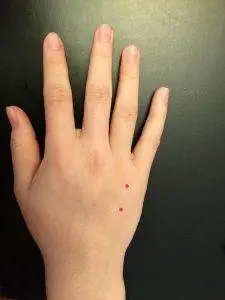
If you are in pain, and nothing has helped, you may be wondering how to find acupuncture near me. Look for an acupuncturist who is board certified in your state. A good acupuncturist is highly trained and has experience in integrative medicine, so that they can work with your primary physician if needed. At Art of Wellness, we suggest a first appointment should include an in-depth consultation and exam. Usually an acupuncturist will recommend a course of treatment that include sessions two or three times per week for the first few weeks, then will reevaluate to keep track of progress and improvement. Look for a place where you feel comfortable, listened to, and able to relax. Your acupuncturist will make recommendations for TCM herbal formulae and dietary changes that will help your condition. These may seem difficult to follow at first, but they will help your body heal better and more quickly. New healthy habits can help prevent your lower back pain from coming back.
What is Multiple Sclerosis and How to Manage MS with TCM & Acupuncture
Multiples Sclerosis is autoimmune disease, Traditional Chinese Medicine & Acupuncture are very helpful to improve these condition.
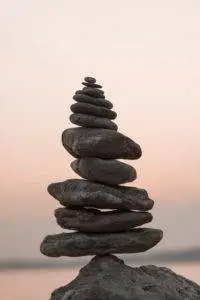
Dr.Tan’s Case and Testimony
Mr. M- a healthy 50-year old Caucasian gentleman—first visited my office Art of Wellness Acupuncture a few years ago. As an attorney, he had been working very hard to support his two daughters, who were both in college. About four months ago, the onset of serve lower back pain along with tingling in his left leg changed his life completely. He saw several doctors, had a number of x-rays and an MRI which revealed a moderate bulging disk on L4-L5. He tried different pain pills, NSAIDs, and underwent three months of physical therapy, none of which had helped. Recently, he had been experiencing numbness and weakness in his left leg, and was suffering from depression due to his inability to carry on with daily work and regular activities. When he talked to me, I noticed that he constantly rubbed his eyes. I asked if he felt any abnormalities in his vision. He answered yes, and that he had periodic occurrences of blurred vision. When I suggested that he showed me how he walks, I noticed his poor balance. He tended to fall on his left side because his left leg did not seem to follow his motion. Then I checked his knee and ankle reflex and found that they were excessively active. I was almost certain that the condition that made him suffer so much in the last few months was not a simple bulging disk or sciatica; it was a disorder of the central nervous system-Multiple Sclerosis. Immediately, referred him to a neurologist and suggested that he have a brain and cervical MRI. Two weeks later, he came back to my office with a confirmed diagnosis of Multiple Sclerosis.
Mr. M. is just one of 200 patients who are diagnosed with MS every week in the United States. There are about 400,000 people in the U.S. and 2.5 million patients who are suffering from this disease in the world.
Cause of MS
MS is an autoimmune disease in which infections or environmental changes can confuse the body’s defense system. Sometimes a foreign antigen mimics a group of the body’s own proteins. When the immune system response by mounting an attack against these foreign invaders, it inadvertently destroys the foreign antigen along with any similar antigens, including the body’s own tissues.
A recent study shows that a virus called adenovirus type 2 looks remarkably similar to the composition of the protective covering around the spinal cord and parts of the brain—the myelin sheath cells. The attacks of the immune system of this virus along with the mistaken attack on the myelin sheath is believed to be the ultimate cause of multiple sclerosis。
Common symptoms of MS
- numbness or tingling, usually in the leg or arm
- muscle weakness
- dizziness
- spasticity
- pain (moderate to severe)
- Ataxia
- Tremor
- Slurred speech
- Blurry, double vision or blindness
- bladder malfunction
- bowel dysfunction
- sexual dysfunction
- depression
- euphoria
- cognitive abnormalities
- fatigue
Most commonly, MS first manifests itself in a series of attacks followed by complete or partial remission as symptoms mysteriously lessen. These symptoms, however, will return later after a period of stability. This is called relapsing-remitting (RR) MS.
Treatment of MS
Unfortunately, there is no cure for MS yet. In Western Medicine, the treatment focuses mainly on decreasing the rate and severity of relapse. Beta interferons, anti-cancer drugs (to weaken the immune system), and steroids are commonly used for the treatment of MS. These medicines can reduce the number of MS lesions, delay the progression of the disease, and provide symptomatic relief for the patient.
In TCM, a condition called “Wei Syndrome” with symptoms similar to MS, was documented 2000 years ago in a classic Traditional Chinese Medicine book called Emperor Classic Medicine. Acupuncture and Traditional Chinese Medicine has been involved in the treatment ever since. MS patients who have tried acupuncture report improvement in pain, spasticity, numbness and tingling, fatigue, depression, anxiety, and bowl, bladder function.
Maintaining a healthy lifestyle is very important for the MS patient. This includes:
- Getting enough time to sleep and rest. Go to bed early
- Exercise regularly. Tai Chi and Yoga are very good to help patient relax, balance and with muscle strength
- Balanced diet, a lot of vegetables and enough protein from white meat
- Stress management
- Daily meditation and positive thinking
- Staying connected with friends and joining a support group
- How to reduce and prevent inflammation
Patient Story- Gilly
I was diagnosed with Relapsing Remitting MS in 1991 and I had no idea what a crazy, unpredictable journey I was about to embark on.
I woke up one morning, tried to get out of bed but my legs were like jello, I had no balance and had double vision.
I was given a spinal tap and MRI and lesions were detected on my brain & cervical spine.
When first diagnosed, my neurologist put me on one of the few FDA approved medicines for MS which don’t cure the disease, but delay the progression. For that I inject myself daily and have done so for 17 years
For the first 7 years after being diagnosed, I experienced relapses (flare up of symptoms) on average twice a year. The treatment for relapses was a 5 day course of steroids administered through IV, followed by 12 days of oral steroids.
The relapses affected my motor skills the most, especially walking but after a treatment of steroids, I was almost as good as new.
My friends suggested I try acupuncture. I was recommended to Dr Tan because he had studied MS in China. *
Dr Tan has been monumental in my life. He has given me treatments for a multitude of injuries I’ve suffered over the years due to frequent falls and is an expert in pain relief. He treats me for stress relief which contributes my general wellbeing. Dr Tan is very knowledgeable about Western medicine and MS treatments so I always ask his opinion.
I’ve been diagnosed with MS for 21 years and feel fortunate that Dr Tan has been treating me for a large part of that time. Although I partake in Western medicine, I know that Western medicine only treats the symptoms but Eastern medicine treats the cause of the symptoms.
My MS has progressed to the stage that I now use a wheelchair full time.
I go to acupuncture for preventative care. My immune system needs extra help especially during cold & flu season.
I am very aware that MS is a ‘designer’ disease, and no two people have the exact same symptoms. I would encourage anyone with MS to avoid stress, keep up a healthy immune system and try to stay positive and happy, because your emotional state affects your physical being.
